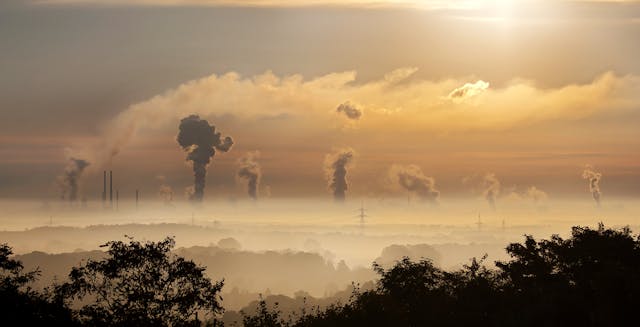As residents defy firecracker bans, air quality in Delhi and surrounding regions plummets, with Anand Vihar reporting an AQI of 395
In the wake of Diwali celebrations, residents across Delhi, Noida, and Gurugram awoke to a dense blanket of toxic smog on November 1, 2024. The aftermath of festivities has resulted in alarming air quality levels, prompting widespread concern among citizens and health officials alike. Despite a government ban on firecrackers aimed at curbing pollution, many locals chose to ignore the restrictions, leading to severe air and noise pollution that significantly reduced visibility.
According to the Central Pollution Control Board (CPCB), the air quality index (AQI) in Anand Vihar, a prominent locality in Delhi, reached a staggering 395 by 6 AM, categorising the air quality as “very poor.” This deterioration has raised alarm bells, as authorities warn that the AQI is likely to worsen in the coming days due to stagnant weather conditions and continued emissions from post-Diwali celebrations.
The smog engulfing the capital and surrounding areas is not an isolated incident but rather a recurring issue exacerbated by seasonal festivities. Diwali, known for its vibrant celebrations and fireworks, invariably contributes to a spike in air pollution levels. This year, the situation has been particularly dire, with various regions in Haryana also reporting AQI levels falling into the ‘poor’ and ‘very poor’ categories on the night of Diwali.
Embed from Getty ImagesMotorists navigating the streets of New Delhi faced hazardous conditions, as thick smog hindered visibility and posed serious health risks. Local authorities have urged residents to remain indoors and limit outdoor activities, particularly vulnerable groups such as children, the elderly, and those with pre-existing respiratory conditions. Hospitals have reported an increase in patients seeking treatment for respiratory issues, a direct consequence of the deteriorating air quality.
The persistence of air pollution in Delhi has ignited public outrage, prompting calls for more stringent enforcement of regulations regarding firecrackers and emissions. Environmental activists have highlighted the urgent need for sustainable practices and increased awareness among citizens about the impact of their actions on air quality.
In addition to firecrackers, other contributing factors to the smog include vehicular emissions, construction dust, and crop burning in neighbouring states. As winter approaches, weather patterns often trap pollutants closer to the ground, exacerbating the health crisis. The city has long grappled with air quality issues, and each year, post-Diwali spikes serve as a stark reminder of the challenges ahead.
In response to the growing crisis, government officials are considering measures to tackle pollution more effectively. Some proposals include stricter regulations on construction activities, enhanced public transport systems, and public awareness campaigns aimed at educating citizens on the importance of reducing pollution.
While immediate steps are being taken to address the situation, the long-term solution requires a collective effort from government bodies, businesses, and residents. Ensuring cleaner air in Delhi will necessitate comprehensive policies and community engagement to foster a culture of environmental responsibility.
As residents brace for potentially worsening air quality in the days ahead, the hope remains that collaborative efforts can pave the way for a cleaner, healthier future. For now, the toxic smog serves as a harsh reminder of the delicate balance between celebration and environmental stewardship, emphasising the need for vigilance in safeguarding public health.
